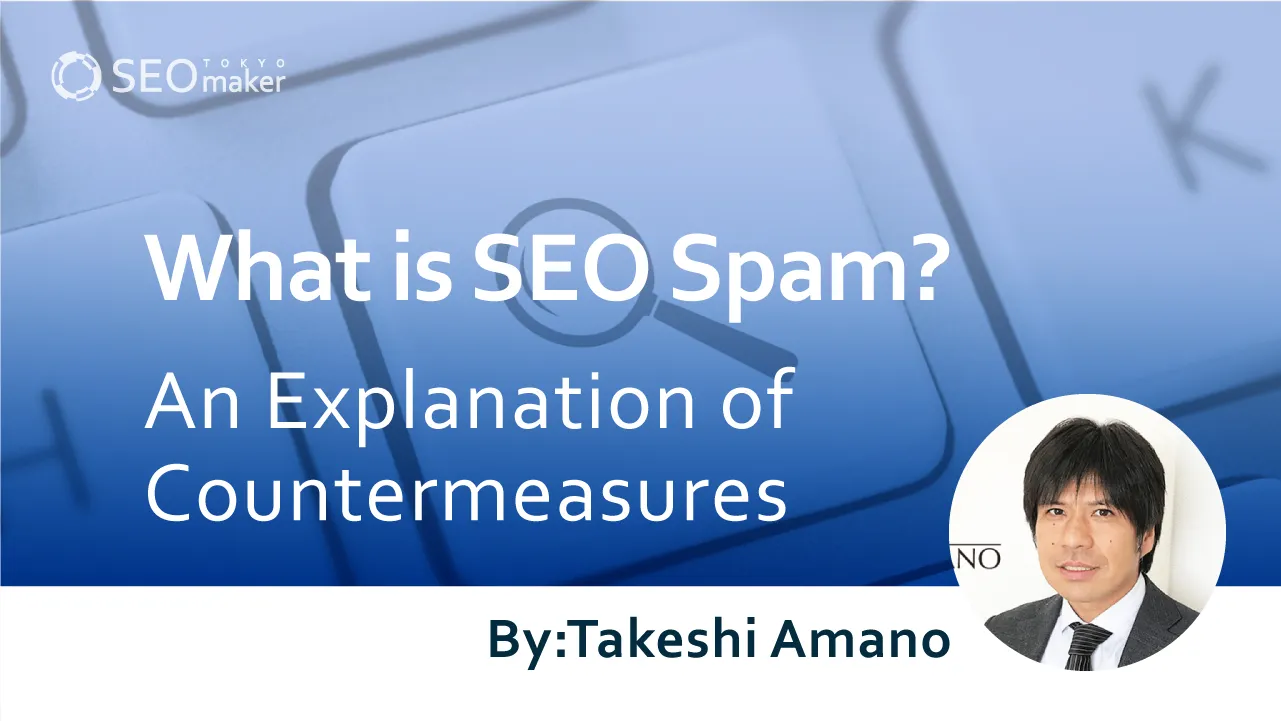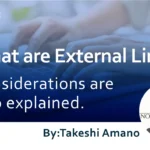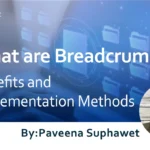What is SEO Spam? An Explanation of Countermeasures
contents

SEO spam refers to malicious SEO practices that violate Google’s guidelines. Engaging in SEO spam carries the risk of penalties from search engines, so it should not be done intentionally. However, it’s also true that sites operating in compliance with guidelines can unwittingly become victims of malicious external sites.
In this article, we will explain the risks associated with SEO spam, its types, and how to deal with damages from external sources. By reading this article to the end, you will gain a proper understanding of the concept of SEO spam and the risks of penalties.
What is SEO Spam?
SEO spam, also known as Black Hat SEO, is the practice of manipulating rankings in violation of Google’s guidelines.
Until around 2010, when search engine crawlers were less accurate, Black Hat SEO could lead to higher search engine rankings, and SEO spam practices were rampant.
However, recent updates to search engine algorithms, such as the Penguin and Panda updates, have been successful in repelling rankings achieved through SEO spam.
Bothersome act of attempting to achieve higher rankings through excessive SEO
SEO spam is a nuisance activity that increases the presence of low-quality content in search results through excessive SEO strategies. When search results become cluttered with content lacking user convenience, users start to abandon the search engine.
A decrease in users means many sites that rely on SEO for traffic will suffer. Therefore, search engines frequently refine their algorithms to protect their platforms and crack down on SEO spam.
Violating Google’s Webmaster Guidelines (Quality Guidelines)
SEO spam is a prohibited activity under Google’s Webmaster Guidelines. It deviates from Google’s “user-first” philosophy, so it must never be engaged in.
Whether an SEO strategy qualifies as spam can be determined based on Google’s fundamental principles introduced below:
- Is user convenience prioritized?
- Are users being deceived?
- Is there anything questionable about the SEO measures taken?
- Can the site be described as original and appealing?
When performing SEO, use these four basic principles as criteria and proceed with operations that prioritize users first.
Reference: Webmaster Guidelines (Quality Guidelines) | Google Search Central | Google Developers
Why is SEO Spam Subject to Penalties?
Search engines impose strict penalties on sites that engage in SEO spam because Google has a duty to ensure the search engine remains a user-friendly platform.
This also ultimately guarantees the effectiveness of SEO for sites. By understanding why SEO spam is penalized, let’s deepen our understanding of the essence of achieving high rankings through SEO.
Acts that Compromise User Convenience
If low-quality pages are ranked high due to SEO spam, it obstructs users’ information gathering. Pages that appear at the top of search results must be high-quality pages that faithfully answer users’ search intentions.
Creating high-quality pages naturally requires effort, but forcing low-quality pages to rank high will not earn users’ trust. Prioritize user convenience and create content meticulously.
Additional Understanding “The Ten Things Google Has Found to Be True”
In operating a user-first search engine, Google has published ten principles. Among “The Ten Things Google Has Found to Be True,” here are two that serve as the basis for why ethical White Hat SEO is effective:
- Focus on the user, and all else will follow.
- You can make money without doing evil.
Citation: The Ten Things Google Has Found to Be True
Google has earned users’ trust by prioritizing user convenience in its search engine operations. It has a track record of generating revenue through advertising income and search service provision without resorting to misconduct like paid ranking manipulation.
SEO is a strategy that operates on the platform of Google’s search engine, which holds the above principles as its basic philosophy. Site operators should proceed with site production that considers Google’s philosophy and prioritizes the user-first approach.
What Penalties Can Result from SEO Spam Determination?
Receiving an SEO spam determination from Google can lead to severe penalties, with the worst-case scenario being that a site becomes irrecoverable. Knowing the specifics of these penalties can facilitate a quick review of your own site.
While we will detail this further below, it is not uncommon for site operators to receive an SEO spam determination unintentionally. Even if there’s no known involvement with SEO spam, it’s not entirely unrelated, so it’s crucial to thoroughly understand the risks involved.
Decrease in Search Rankings
Receiving an SEO spam determination can lead to a decrease in the site’s SEO rating. Not just the specific spam pages identified, but often the entire site’s content can experience a cascading decrease in search rankings. This significant drop in user access can lead to decreased effectiveness in attracting visitors.
Deletion from Index
Beyond just a drop in search rankings, there’s also a risk of being completely removed from the index. Being deleted from the index means users will no longer be able to access your site at all. If removed, it could be due to either a manual penalty by Google staff or an automatic penalty through crawling.
If it’s a manual penalty, you can request re-indexing through Google Search Console after making corrections. However, if it’s an automatic penalty, you cannot request re-indexing. You must wait for the crawler to revisit, meaning there could be no access until re-indexing occurs.
Neutralization of Spam
While it’s true that receiving a spam determination can lead to severe penalties, it seems that recent search engine responses tend to neutralize SEO spam rather than impose harsher consequences.
John Mueller of Google responded to a follower on Twitter about why spam pages were indexed in search results, indicating a move towards neutralizing spam content rather than immediately resorting to severe penalties.
“Of course, spam enforcement is functioning, but the extent of action varies. In many cases, algorithms automatically handle the neutralization of spam. If malicious links can be neutralized, that’s often sufficient, and there’s no need to completely exclude pages from search results.”
Citation: Tweet by Mr. John Mueller on Twitter
This means that the automatic penalties applied by crawlers do not aim to exclude sites performing SEO spam but rather to ignore the spammy elements. Thus, search engines fairly evaluate the content outside of the SEO spam parts and display them in search results.
The reason for the milder response from crawlers could be due to the increased difficulty in content creation for information dissemination. If site operators who unknowingly engage in SEO spam were strictly excluded, it would become challenging for search engines to secure the “information” that is their lifeline.
One of the values of using search engines for users is the notion that “you can find out anything by just Googling.” To maintain the reliability of search engines that cover a wide range of information, having a vast quantity of indexed pages is essential.
However, the decrease in penalty cases does not justify engaging in SEO spam, nor does it mean you should reduce information dissemination out of fear of SEO spam determination. It’s important to equip yourself with literacy regarding SEO spam.
Types of SEO Spam
There are various types of SEO spam designed to deceive both crawlers and users, especially in black hat SEO, where keyword and link-based spam are prevalent.
Even if your site does not intentionally engage in SEO spam, it’s important to be aware of the potential to be targeted by spammy actions from external sources.
Keyword-Based Spam
Keyword-based spam involves the excessive use of keywords to signal relevance to search engines. Keywords should be inserted without compromising the context, keeping in mind the readability for both users and crawlers.
Hidden Text
Hidden text refers to text within a page that is displayed in a way that is difficult for users to see. It is implemented using techniques such as making the text color the same as the background color or using extremely small font sizes. Since the text is clearly written in the CSS and HTML source, crawlers are designed to recognize hidden text.
Alt and Meta Description Attribute Spam
The alt attribute is an HTML property that explains the relevance of images to keywords for crawlers. The meta description provides a summary of content to crawlers. Alt and meta description attribute spam involves incorporating an excessive amount of keywords to appeal the relevance of images and content to crawlers.
Hidden Frames
Hidden frames refer to a technique of embedding a large number of keywords within the frame part of a page design. It’s a form of hidden text that is invisible to users but can be read from the source by crawlers.
Link-based Spam
Link-based spam involves self-serving reciprocal links or paid mass backlinking. While related links and quality backlinks can enhance SEO evaluation, they must be relevant to the content. Quality over quantity in link placement is essential.
Also, consider the possibility of being targeted by malicious external sites with link-based spam. Regular checks with Search Console are necessary to address link spam from malicious sites.
Hidden Links
Hidden links use the same technique as hidden text to make link text invisible to users. Crawlers can recognize the source code of the link, creating a discrepancy in visibility between users and crawlers.
Link Farms
Link farms are a method of “producing” backlinks through self-collusion. The goal is to illegitimately enhance a site’s credibility by creating multiple websites and applying mass reciprocal links.
Blog Comment Spam
Comment spam refers to the strategy of massively posting links to one’s site in the comment sections of external sites or blogs. Links from comment spam are unrelated and highly likely to be determined as spam.
Redirect Spam
Redirect spam guides users from search results to unrelated pages. Redirecting users to another page is not an issue in itself, but if it includes the intent to deceive users and crawlers, it qualifies as SEO spam.
Cloaking
Cloaking refers to the practice of serving different content on the same URL page to users and crawlers. It is acceptable to use this technique to provide supplementary explanations for content such as JavaScript, images, and videos, which crawlers may find difficult to recognize. However, if the content intended for crawlers is designed to manipulate rankings illicitly, it will be considered as a target for SEO spam.
Doorway Pages
Doorway pages are low-quality pages created solely for ranking purposes, directing users to a specific other page. Users end up feeling frustrated when they cannot find the information they are looking for.
Popup Misuse
Popups refer to advertisements that appear while a user is browsing a page. Popups are not inherently spam, but displaying them too frequently to the point of disrupting user browsing can be considered spam. Set up popups appropriately to ensure users can comfortably browse content.
Copy-related spam involves plagiarizing content from other sites and posting it on one’s own site. This mainly includes copying parts of external content and creating mirror pages that copy all content.
Being victimized by external sites copying your content can be problematic, as your pages might be judged as copy content. Copy-related spam is not only an SEO issue but also a copyright infringement. There’s a risk of litigation, so always create original content.
Methods for Countering SEO Spam
Even if your site does not engage in SEO spam, it’s essential to be aware of the possibility of being targeted by external spam. Here, we introduce ways to protect your site from spam damage.
Changes in Search Rankings Alone Do Not Confirm Spam Damage
Unfortunately, changes in search rankings alone cannot determine whether your site has been affected by spam. Search engines frequently update, meaning rankings can drop even without spam damage.
If your site receives severe penalties like ‘index removal’ without engaging in spam activities, it’s almost certain you’ve been targeted by SEO spam. For minor ranking fluctuations, it’s necessary to speculate and take measures.
Manual Penalties Can Be Identified Using Google Search Console
While automatic penalties require speculation for countermeasures, manual penalties allow for identifying causes and solutions. Follow the specified methods towards lifting the penalty and proceed with the reconsideration request according to instructions.
Beyond addressing penalty damage, Google Search Console is useful for site analysis. If you haven’t utilized it for your site yet, consider implementing it.
Summary
This article discussed the dangers of SEO spam, its types, and how to counteract spam from external sources. Manipulating rankings through SEO spam is prohibited due to the risk of penalties and should be avoided to prevent lowering your site’s SEO evaluation. Unintentional SEO spam can occur, so it’s recommended to check even if you believe your site is not involved.










![What is a Description? Explaining the Meaning, Writing Style, and Changing Word Count – [2023 Edition]](https://www.switchitmaker2.com/en/wp-content/uploads/2024/09/what-is-description.webp)










